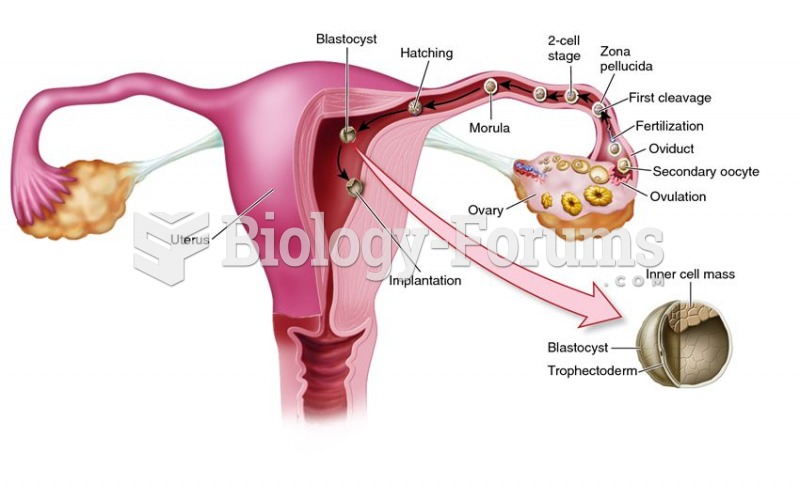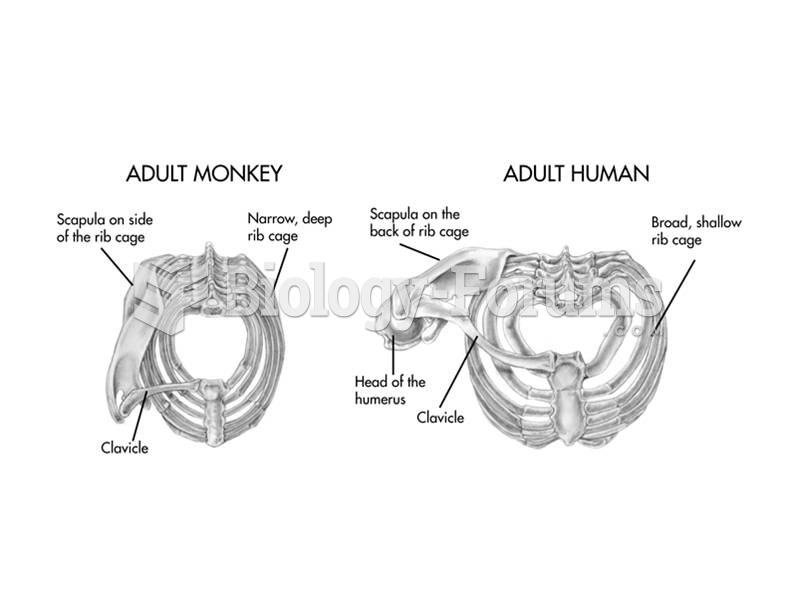|
|
|
Approximately 500,000 babies are born each year in the United States to teenage mothers.
The cure for trichomoniasis is easy as long as the patient does not drink alcoholic beverages for 24 hours. Just a single dose of medication is needed to rid the body of the disease. However, without proper precautions, an individual may contract the disease repeatedly. In fact, most people develop trichomoniasis again within three months of their last treatment.
Egg cells are about the size of a grain of sand. They are formed inside of a female's ovaries before she is even born.
The Romans did not use numerals to indicate fractions but instead used words to indicate parts of a whole.
When blood is exposed to air, it clots. Heparin allows the blood to come in direct contact with air without clotting.







